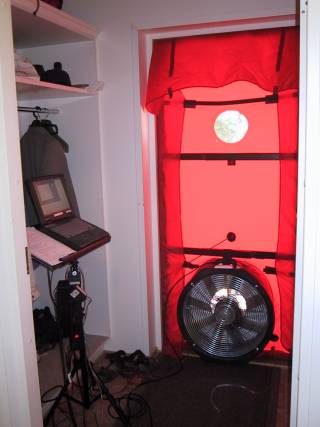 The aim of air permeability experiments is to study the air permeability of a building’s exterior structures and to locate possible air leaks. The building should be prepared so that all the windows and doors on the exterior have been installed and sealed, all ducts through the exterior must be sealed, and the air conditioning needs to be installed and functional so that it can be turned off. The internal volume and exterior structure area of the building should be calculated to prepare for the experiment.
The aim of air permeability experiments is to study the air permeability of a building’s exterior structures and to locate possible air leaks. The building should be prepared so that all the windows and doors on the exterior have been installed and sealed, all ducts through the exterior must be sealed, and the air conditioning needs to be installed and functional so that it can be turned off. The internal volume and exterior structure area of the building should be calculated to prepare for the experiment.
During the experiment wind speed should be less than 6 m/s and the temperature difference between indoor and outdoor air multiplied with the height of the building should be less than 500 m°C. If the pressure difference between indoor and outdoor air is more than 5 Pa, an overpressure test must be done too in addition to an underpressure test. The test equipment should be placed in the middle of the building in a sheltered place (e.g. balcony door of a middle floor). The tarp surrounding the equipment must be tightened on the doorframe so that there are no gaps left. If gaps remain, they are sealed with tape.
Under- and overpressure tests are done with at least five evenly spaced pressure differences. The largest pressure difference must be at least 50 Pa. Examples of pressure difference sets are 30, 40, 50, 60 and 70 Pa or 10, 20, 30, 40, 50 and 60 Pa. V50- and n50-values are received from the program after the experiment. During the experiment air leaks can be located with signal smoke (overpressure), by feeling by hand in case of larger leaks (underpressure), or with an infrared camera.
